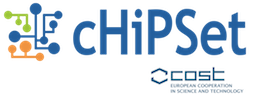|
Name |
Mauro Iacono |
|
Affiliation |
Seconda Università degli Studi di Napoli, viale Ellittico 31, 81100 Caserta, Italy |
|
Corresponding WG |
WG1 |
|
Grant research topic |
Performance evaluation in Big Data and Cloud architectures |
|
Hosting Institution |
Cracow University of Technology, ul. Warszawska 24, 31-155 Kraków, Poland |
|
Period |
2015-11-23 to 2015-12-16 |
|
Summary of the scientific report |
Workplan (Tasks and Activities)The topics on which the WG1 group of the IC1406 COST Action (Enabling Infrastructures and middleware for Big-Data Modelling and Simulation) focuses include the research on the development of novel heterogeneous models, algorithms and techniques for advanced Big Data exploitation, based on the current and emerging multicore system architectures, virtualized servers and data centres, mobile cloud and multi-cloud systems. An important contribution is given by performance evaluation and performance engineering techniques and methods, that support the management and design of complex HW/SW systems. The aim of the visit during STSM is to exchange expertise on performance evaluation methods and techniques used in the two groups and to compare the approaches. The two groups have an extended literature in the field, and apply their approaches to different goals within high performance computing systems: the guest’s group characterizes big scale architectures as a whole, from the point of view of the administrator or the provider, using stochastic approaches to describe the overall workload and the behaviour of the system, while the hosting group focuses the analysis on a detailed characterization of the scheduling of the tasks of a distributed application from the point of view of the optimization of the single application and considering data dependency and allocation. The final goal is to establish an extended, stable collaboration to integrate the results and the techniques of both parties to develop a unified comprehensive approach that should exploit the advantages of the two points of view. The horizon of the future research activities includes multicloud or hybrid cloud architectures and a special attention to the energy related issues. The workplan is organized into 3 main activities, here articulated in tasks in the following: 1. definition of the background for the collaboration
2. development of common research activities
3. planning of long term collaborative research activities
Realisation of the workplanThe activities have been organized on a weekly basis. The first week has been devoted on reciprocal presentation and critical analysis of the relevant activities of the two groups: the main topics from the guest’s group have been the presentation of the fundamentals, the application and the main results of Mean Field Analysis modeling techniques and of Multiformalism modeling techniques, while the hosting group presented their simulation based techniques for the evaluation of schedulers in grid and cloud systems, for security data distribution in clouds and energy related system evaluation. The main results of the activities of the week have been the analysis of literature related to the field and the identification of possible contributions. The second week has been devoted to develop the basis of the identified contributions and to apply a hands-on approach to the tools in use in the two groups. The activities specially focused in studying possible extensions for the data aware scheduling model used at the hosting group to let the optimization metrics include different type of architectures and more detailed contributions of the architectural layers, such as network contribution. Some hypotheses on the applicability of a different simulation support has been done, to better match the aims of the research and get to a more flexible platform that would ease the development of new ideas. During the second week the guest’s group activities have been officially presented to the whole department during the weekly meeting to broaden the possible collaborations. During the third week the discussions focused on sketching a possible MFA-based testbed for the evaluation of the performance costs of security breachs into large cloud platforms and on exploiting existing results of multiformalism modeling research in studying the performance problems of multicloud oriented map reduce based applications, to support the hosting group activities related to the G-Hadoop project. In perspective, existing work onto energy related performance issues of the two groups have been compared, to open a third way to shared research activities. Finally, the basis have been set, in terms of possible publications, contributions to the Action and more strategical activities, to setup a permanent long term collaboration between the two groups. |
|
The results of the visit can be summarized into a state of the art, a research plan and three possible simulation testbeds to support future activities. The results of immediate activities will be published by means of research papers targeting:
HiPMoS 2016: High Performance Modeling and Simulation, in ECMS 2016: 30th European Conference on Modelling and Simulation (May 31st – June 3rd, 2016, Regensburg, Germany); Software: Practice and Experience one between IEEE Systems Journal, Future Generation Computer System or Concurrency and Computation: Practice and Experience |
